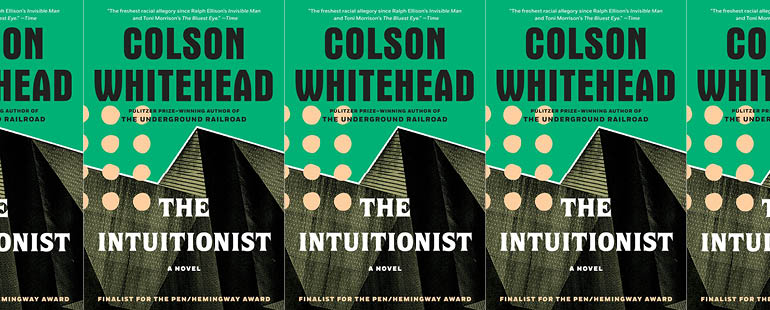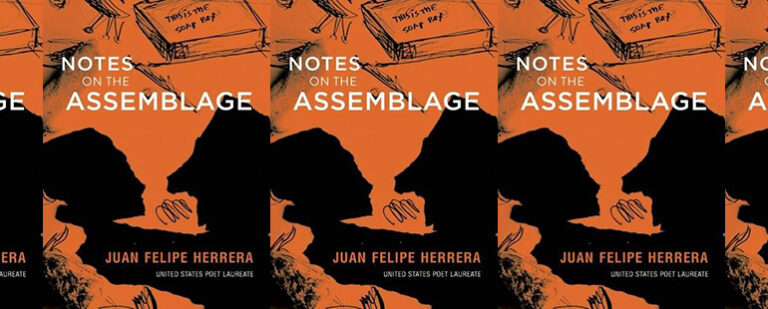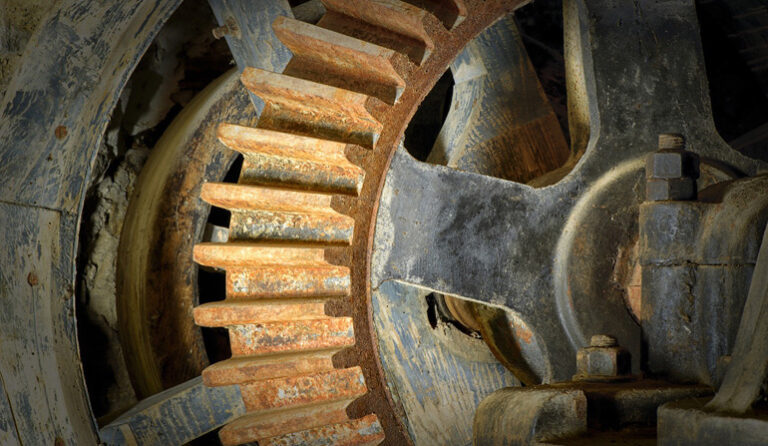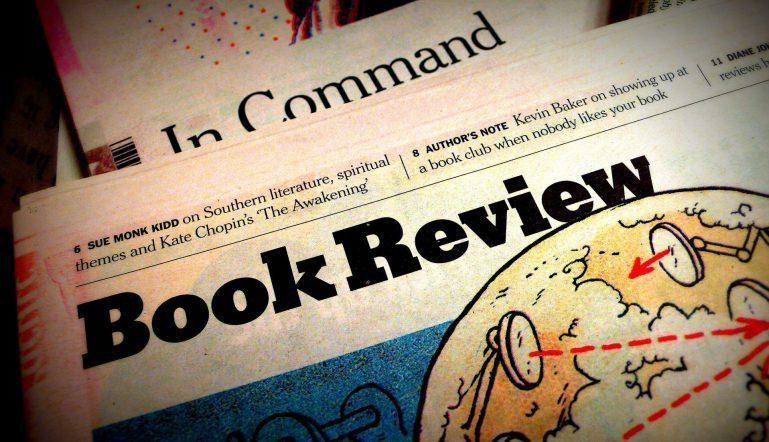Revisiting The Intuitionist

Colson Whitehead’s wide range of subject and style is well-known: he’s written a zombie novel, Zone One (2011); a coming-of-age novel, Sag Harbor (2009); a satire about names and branding, Apex Hides the Hurt (2006), and two harder-edged Pulitzer Prize-winners: The Underground Railroad (2016), a historical fantasy about slaves in the south escaping to the north, and The Nickel Boys (2019), an unflinchingly tight book based on a real Florida reform school. His most recent novel, Harlem Shuffle (2021), is a crime caper set in 1960s Upper Manhattan. In between these books, Whitehead has published two works of nonfiction—The Colossus of New York (2003), and The Noble Hustle: Poker, Beef Jerky, and Death (2014).
Lesser known, though no less unique, is his career-beginning novel, The Intuitionist (1999), a complex book that takes an authoritative point of view within a deeply imagined world. Set in a nameless city, the novel takes a seemingly niche, esoteric subject—elevators—and imbues it with a philosophical idea. That idea is verticality: the skyscraper, made possible through Elisha Otis’s invention, allowed urban populations to compound, growing upward; in The Intuitionist, the inspection of the machines is thus freighted with a significance of religious proportion. Like with many religions, there is scripture on the history of elevators and the theory of vertical travel, and there are those who deviate from the herd and judge others—the rules of this comic otherworld make sense.
The novel’s protagonist, Lila Mae Watson, is a graduate of the Institute of Vertical Transport and an Intuitionist, a disciple of the mystical elevator theorist James Fulton, able to suss out an elevator’s problems by feeling alone, putting her ear to the wall of the car and hearing the hum and clanking on the other side (“You aren’t one of those voodoo inspectors, are you?” a building manager asks her); in opposition to the Intuitionists are the Empiricists, those who follow elevator manuals and look at technical aspects to see what is astray. Lila Mae is also a Black woman, the first to work in a department dominated by racist white men who react when they are shown up and want to see her fail. When an elevator that she had deemed safe mysteriously plummets just before the mayor is due to step aboard, Lila Mae and her methods become a target of blame. This occurring in the run-up to an election for chair of the Elevator Inspectors Guild gives Lila Mae reason to think that something is fishy. The fictional, parochial politics of elevator science here run parallel to real-world political issues that engage cities, like housing and infrastructure.
But the city of The Intuitionist itself remains a mysterious grayed-out backdrop, identified only with vague geographic referents, like “the outer edges…near the bank of the polluted river that keeps the skyscrapers at bay from the suburbs.” Every hint points to New York, as when Whitehead describes it as “not a Southern city, it is not an old money city or a new money city but the most famous city in the world.” But to identify the city as New York is to make it familiar, well-trodden, and tangible—less sinister. New York has its own established attitude, its own messy past, its eight million stories, its tourists and lights and stardom, and its real-world perils, so to place Lila Mae’s tale against that standard backdrop only serves to reduce it, limiting its mystery and danger. Whitehead, in keeping the city both fictional and nameless, clearly intends to prevent this limitation.
In Whitehead’s nameless city, there are bustling scenes, there is traffic, yet its anonymity somehow quiets it. When Lila Mae shows up to a building to perform an inspection, the street behind her is described as “improbably empty, as if the city had been evacuated and she’s the only one who didn’t hear about it.” One street corner is described as being jammed with “busy, milling citizens during the day” and “emptie[d] completely at night except for prostitutes and lost encyclopedia salesmen.” In a city built upon a philosophical idea of verticality, the architecture is more alive than the people moving in its midst, and too much noise would distract from the haunting presences of the edifices: “When Lila Mae first walked up the broad stone steps of the building, she looked up at the monolith above and felt a trembling instant of vertigo…The mandatory Latinate motto was engraved above the entrance.”
The idea of height in the novel is associated with ambition in both physical and figurative reaching. Quite often, it is associated with white male hubris (think of one real estate mogul’s untimely boasts when the Twin Towers were destroyed). It is, in fact, because of a white man’s audacity to reach high that Lila Mae is able to make a living in this way. But height also brings instability and terror, and the elevator is meant as a way to conquer the limitation of being grounded. In popular culture, however, the elevator has trope value: it’s where the office worker makes uncomfortable small talk facing the fourth wall (as in Mad Men), where passengers get precariously stuck during earthquakes, where trapped women go into labor. Elevators are chambers that place you at the mercy of architecture and bring their own psychology. Some of the best writing in The Intuitionist thus probes the intricacies of elevator design—an oversized door is meant “to foster the illusion of space, to distract the passenger from what every passenger feels acutely about elevators. That they ride in a box on a rope in a pit.” If you’ve ever been inside an elevator and had the door open when the car wasn’t aligned with the floor, you know how quickly you can be shocked out of the comfort—paneled walls and polished chrome; music and quiet hum—of that box. Behind the panels lie pulleys, cables, pistons, brakes, and a long column of darkness, where no human is meant to occupy space.
The world of The Intuitionist is similarly one of darkness and corruption, and the anonymity within manages to turn it darker and Lila Mae’s journey lonelier. She is trapped, like an elevator passenger, in a cynical system in which dishonest people are out to take what is not theirs and surround themselves with those—the good ol’ boys—who backslap this behavior. Once the elevator door closes, they stop smiling at you and don’t care if you make it safely back down. The dialogue of the book, to that effect, is terse, the characters tightly wound. Lila Mae’s way of speaking is wary, compressed with impatience, as though not wanting to give anything away to the personalities she must navigate. This is survival.
Over twenty years after its initial publication, The Intuitionist’s message remains relevant: it’s a wise critique of ambition and “progress” and the dark spaces that exist in the in-between.


